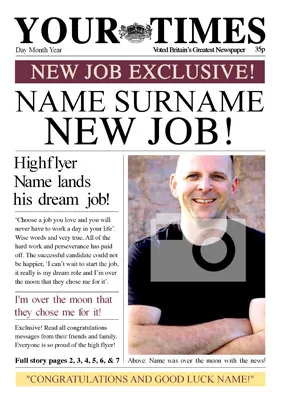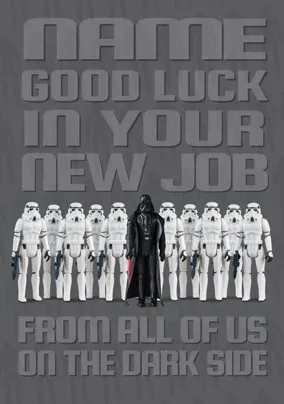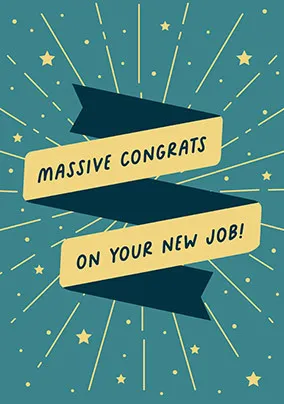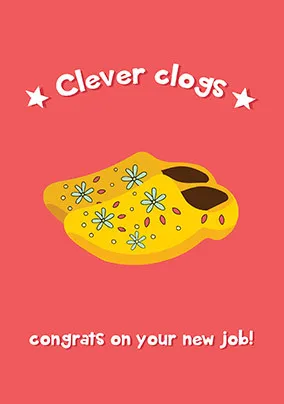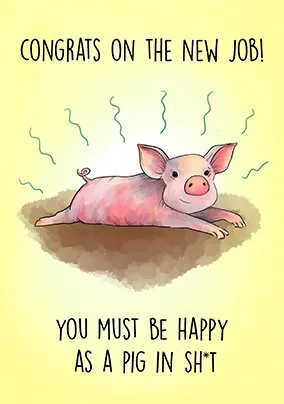When is the Best Time to Look for a New Job?
Published on: December 30, 2024Are you wondering when to look for a new job? Timing can play a significant role in your job search success, whether you’re looking for a career change or your first big break. The answer isn’t as straightforward as you might think. Different seasons and occasions – like the new year! – offer unique advantages, so knowing when to strike can boost your chances of landing that dream job.
Although opinions are divided about the best time to look for a job, in current times, there’s an uptick in July and January. Here’s a breakdown of the best times to look for a job and how to make the most of each opportunity.
If you know someone who is about to take the next career step, check out our range of new job cards to send congratulations to a friend or loved one. And don’t forget to explore thoughtful new job gifts to celebrate landing that exciting opportunity.

New Year Jobs, New Opportunities – January and February
The start of the year is widely considered the best time to start looking for a new job.1 Hiring sees a major surge in January and February.1 Many companies refresh their budgets at the beginning of the year, leading to an influx of job openings. Hiring managers return from their holidays motivated to fill key positions as they plan for the year ahead.
10% of our total new job cards sales for the year are in February, in fact!2 Likely, to congratulate all the people who land a new job in January!
- Why it’s still a strong time: Companies have a clear vision of their annual goals and hiring ramps up to achieve these targets. According to the data, nearly 18% of annual job hires occur during January.1
- What to do: Update your CV and LinkedIn profile as soon as the new year arrives, so you’re ready to hit the ground running. Start networking and applying for roles as early as possible.
Spring into Action – March to May
Spring is another season to watch, though it comes with mixed results. March tends to rank among the lowest months for hiring activity.1 However, April and May still offer steady opportunities as businesses that didn’t finalize hires earlier in the year push to fill roles.
- Why it’s a good time: Many roles remain open, and there’s less competition compared to the January rush. By May, businesses often shift focus to growth and productivity for the summer months.
- What to do: Follow up on any outstanding applications from earlier in the year and keep an eye out for new opportunities. Spring is also a great time to attend career fairs and industry events.
The Summer Surge – June to August
Summer might be believed by many to be a slower hiring period, but some data highlights a surprising peak: July sees the most movement in the hiring process, with 25% of annual assessment completions happening during the month.1 August follows closely behind, accounting for 18%.1 This makes summer an excellent time to move forward in your job search.
Supportive friends and loved ones send thousands of new job cards between June and July – about 20% of all our ‘new job’ cards sent in the year!2
- Why it’s a strong time: Companies push to finalise hires before the third business quarter begins, and fewer job seekers are competing during the summer months. The data also suggests that hiring assessments move quickly in July.1
- What to do: Be proactive in applying and following up applications. Take advantage of the lower competition and be prepared to act quickly when roles become available.
The Year-End Lull – October to December
The final months of the year traditionally see a slowdown in hiring. Budgets are often exhausted, and many companies postpone recruitment until January. However, there can still be opportunities for determined job seekers, particularly in early December.
Just ask Funky Pigeon shoppers! We receive heaps of orders for new job cards from October to December – so don’t despair! It’s possible to get hired all year long.
- Why it’s worth staying active: Businesses sometimes hire quickly in December to start the new year strong. Staying visible can give you a head start when the next year rolls around.
- What to do: Stay in the game by networking, sending speculative applications, and preparing for the January job boom.
Key Factors to Consider When Looking for a New Job
While seasonal trends are useful, other factors can also impact the timing of looking for a new job:
- Industry-specific trends: Certain industries, like education or retail, have unique hiring cycles.
- Your personal readiness: The best time to apply for jobs is when you feel prepared to pursue new opportunities. Ensure your CV, cover letter, and interview skills are polished.
- Economic conditions: Keep an eye on job market trends and economic shifts that may affect hiring.
And finally – a stroke of luck never hurts!
Data sources
1The Hottest Time of Year in Hiring: New Data
2Anonymised Funky Pigeon new job cards data






